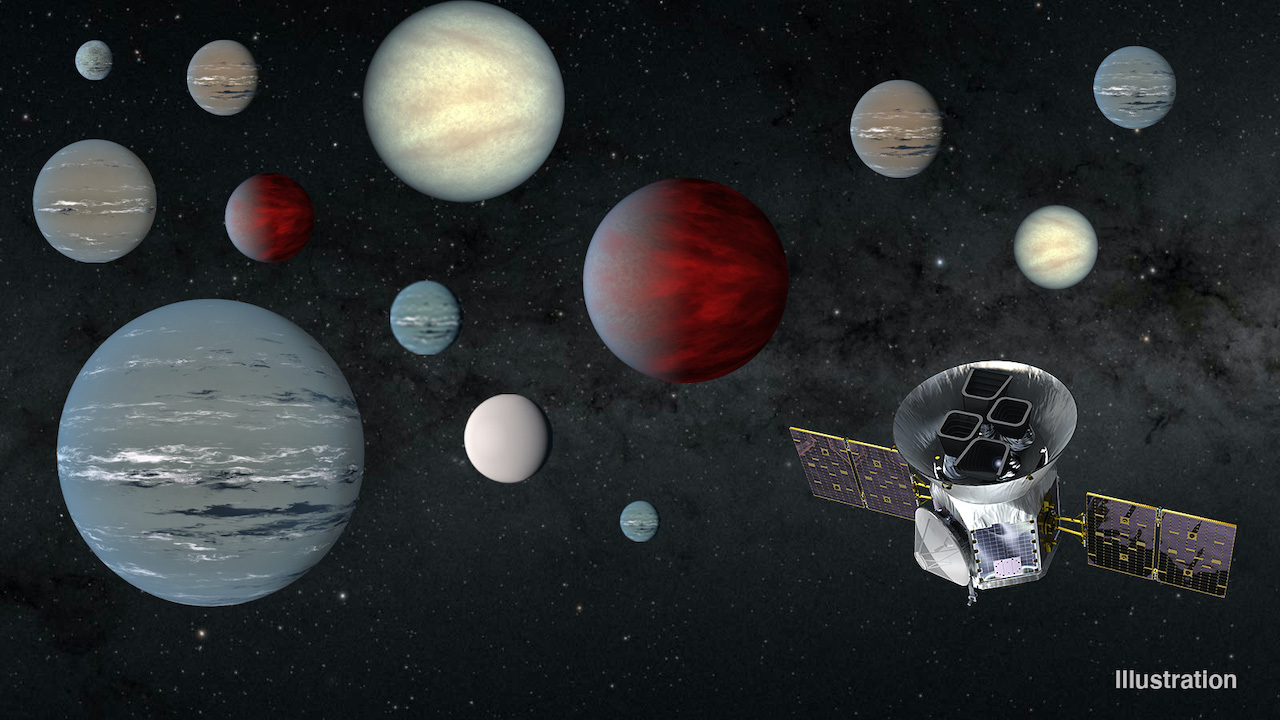

By Pat Brennan (NASA’s Exoplanet Exploration Program)
The news is out of this world: NASA’s TESS space telescope has captured evidence of more than 2,200 candidate planets orbiting bright, nearby stars, including hundreds of “smaller” planets – many possibly rocky worlds in some ways similar to Earth.
As scientists seek to confirm the discoveries, TESS’s large haul promises a possible explosion in the number of known exoplanets – planets orbiting other stars. Perhaps even better: The relative brightness of the stars they orbit should allow TESS’s successor telescopes to probe some of these planets’ atmospheres to search for water, oxygen, and other molecules that might make them hospitable to life.
The bonanza of exoplanet candidates is detailed in a newly published paper that catalogs the two-year prime mission for TESS (the Transiting Exoplanet Survey Satellite), that has produced a steady stream of exoplanet discoveries since its launch in 2018. TESS, in a wide orbit between Earth and the Moon, is now on an extended mission: to fill in gaps in its nearly all-sky survey – that is, both domes of the night sky over Earth’s northern and southern hemispheres.
“The exciting thing is to look at the map of TESS exoplanets as a kind of to-do list – with 2,000 things on it,” said Natalia Guerrero, a researcher at the Massachusetts Institute of Technology and the paper’s lead author.
Revealing planets by their shadows
An international team of astronomers examined TESS’s rich trove of “light curves,” or changes in the brightness of stars as orbiting planets pass in front of them. This search for shadows relies on extremely sensitive detectors behind TESS’s four cameras that can pick up dips in stellar brightness as tiny as 0.1% or even less.
“It’s an incredible body of work – a rich stockpile of exoplanet candidates for the community to mine and explore for years to come,” Jessie Christiansen, a research scientist at NASA’s Exoplanet Science Institute and a co-author of the study, said in an email.
She said the next generation of space telescopes, such as NASA’s James Webb and the European Space Agency’s ARIEL, “will explore many of these planets in exquisite detail, allowing us to better understand exoplanet composition, formation, and migration.”
The first step, of course, will be confirming the existence of many in the catalog that remain candidate planets; about 120 have been confirmed to date with dozens more on the way. Confirmation often requires ground-based observations using gravitational measurements, high-resolution imaging, and stellar characterization.
Bottom line: The huge new planet catalog is a kind of candy store for the astronomical community, allowing deeper investigation of some of the galaxy’s most fascinating questions.
“Now the community’s role is to connect the dots,” Guerrero said. “It’s really cool because the field is so young, there’s still a lot of room for discovery: those ‘Aha’ moments.”